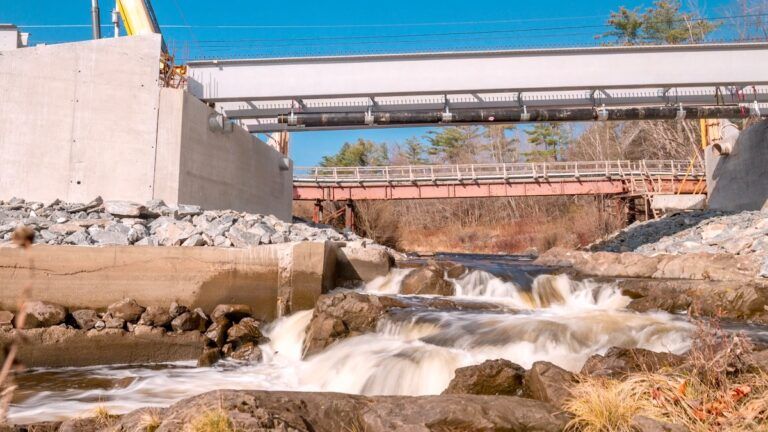Fully circular, low carbon fencing materials, net-zero asphalt, and smart fiber reinforced plastic bridge beams are among the projects participating in a program seeking low carbon solutions on National Highways’ network.
Four firms have made it through to the final stage of the Accelerating Low Carbon Innovation program organized by National Highways in collaboration with Connected Places Catapult and each is set to receive up to £80,000 to make their vision a reality.
Seven firms were initially awarded up to £30,000 to produce plans for their ideas and of these, the four will now get to trial their solutions. The aim is to find innovative approaches to net zero carbon maintenance and construction in a program worth £1.7m overall.
Dr Joanna White, National Highways’ roads development director, said, “We want to speed up innovation within our sector and adopt new solutions. The innovation accelerator will help take potential solutions and drive them through the research and testing phases.”
Melissa Giusti, National Highways’ project manager, added, “In 2021 we set out our Net Zero plan which includes a commitment to net zero emissions from construction and maintenance activity by 2040. Material decarbonization, building less, efficiently using materials, getting things right first time, making their assets last longer and driving change through whole life carbon decision-making are areas that we’re going to focus on.
“To address this, we’re offering funding to innovators for the development of novel solutions that could help them reach their environmental goals. Many congratulations to all the companies who have made it to this stage, and we look forward to seeing them develop their ideas,” Giusti concluded.
The successful four firms are:
Asset International Structures (pictured): For the proposed trial, Asset International Structures is going to develop the “Bridge of the Future” draft concept for use on a Balfour Beatty test site. It is developing smart fiber reinforced plastic (FRP) bridge beams. These innovative non-corroding, high-performance lightweight composite beams enable modern methods of construction, improving safety and reducing cost for transport infrastructure projects. The beams will incorporate a novel optical fiber, enabling structural performance monitoring in real-time. Over the long term, it could help reduce carbon emissions through manufacture, transport, construction, and long-term maintenance.
Circular11: The trial of Circular11, with the support of Kier, will validate the use of recycled plastic composite made from low-grade plastic waste material in boundary and acoustic insulation fencing. After carrying out the necessary in-house testing, Circular11 will first validate its products on Kier’s testing site before deploying on a live trial. If the trial is successful, in the long term, Circular11 could mitigate 20,866 tons of CO2e per year by preventing the incineration of 9,695 tons of plastic material, in addition to 11,644 tons CO2e/year in avoided embodied carbon.
Low Carbon Materials: The proposed trial plan, supported by Skanska, is for Low Carbon Materials (LCM) to incorporate its carbon-negative aggregate into asphalt with the ambition to create net-zero asphalt. This will initially involve LCM laying a test strip of asphalt concrete binder course containing LCM’s aggregate alongside a control test strip containing 100% conventional aggregate. The culmination of the trial will see this innovation deployed on a section of the strategic road network as part of the Skanska-delivered £507m improvement project on the A428 in Cambridgeshire. The carbon-negative aggregate designed by LCM could make a significant impact on National Highways’ carbon emissions with minimal change to standard procedures.
PRG Scotland: This collaborative trial between PRG Scotland and Aberdeen’s Robert Gordon University is supported by Jean Lefebvre UK (part of the Vinci Group) and Amey. The trial is proposing to use a continuous reductive distillation (CRD) process for converting waste tires into low carbon Tyre-Derived Bitumen. Before this substance can be used it needs to be tested for its ability to match bitumen in key performance indicators such as durability, adhesion, stability, environmental impact, quantities, and odor. The use of waste tire-derived bitumen is expected to reduce carbon emissions in road construction and reduce the complex supply chain process associated with bitumen importation.





